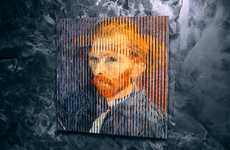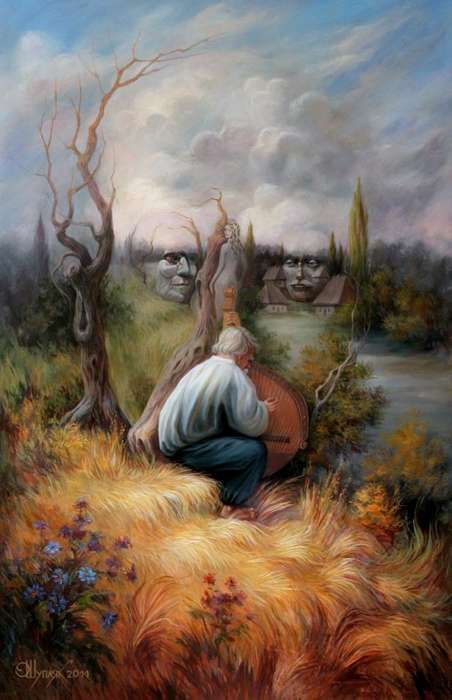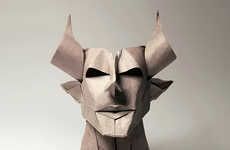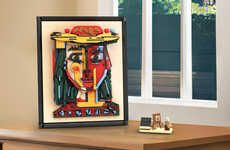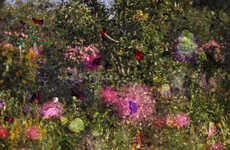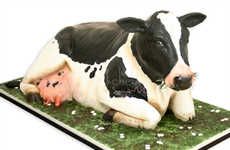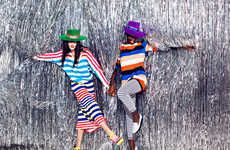
Oleg Shuplyak Hides Famous Faces in His Artwork
Meghan Young — November 16, 2011 — Art & Design
References: amsterdam-artgallery & mymodernmet
Look closely at the work of Oleg Shuplyak and you will eventually be able to see beyond the actual painting to find the optical illusion hidden within its depths. Oleg Shuplyak has made them pretty obvious so that people will most likely find the hidden portraits instantly. Oleg Shuplyak's work features famous faces throughout the centuries.
For instance, Oleg Shuplyak paints historical figures such as artist Salvador Dali, psychoanalyst Sigmund Freud and naturalist Charles Darwin into deceptively scenic oil paintings through strategically placed objects, coloring, shadows and composition. The portraits are very reminiscent of Magic Eye posters.
Based in Ukraine, Oleg Shuplyak's optical illusion oil paintings are currently being sold at the Amsterdam Art Gallery.
For instance, Oleg Shuplyak paints historical figures such as artist Salvador Dali, psychoanalyst Sigmund Freud and naturalist Charles Darwin into deceptively scenic oil paintings through strategically placed objects, coloring, shadows and composition. The portraits are very reminiscent of Magic Eye posters.
Based in Ukraine, Oleg Shuplyak's optical illusion oil paintings are currently being sold at the Amsterdam Art Gallery.
Trend Themes
1. Optical Illusion Art - Opportunities exist for artists and designers to explore the creation of optical illusion artwork, hiding hidden images within their pieces.
2. Interactive Art Experiences - There is potential for the development of interactive art installations that allow viewers to actively seek out and discover hidden elements within the artwork.
3. Revival of Classic Art Techniques - Artists can embrace the revival of classic art techniques, such as strategically placed objects, coloring, shadows, and composition, to create visually captivating and thought-provoking artworks.
Industry Implications
1. Art - Art museums, galleries, and exhibitions can incorporate optical illusion art to offer visitors unique and immersive experiences.
2. Design - Designers can utilize optical illusions in their work, such as packaging design or advertising campaigns, to capture attention and engage viewers in a playful and intriguing manner.
3. Entertainment - Entertainment companies can explore the integration of optical illusions in performances, stage designs, or amusement park attractions, enhancing the overall experience for audiences.
5
Score
Popularity
Activity
Freshness


